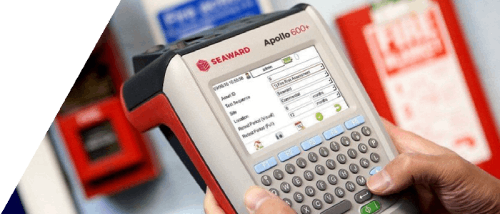How to do substitute/alternative leakage test with the PrimeTest 100?
A substitute leakage test on a PrimeTest 100 may not show a pass on larger class 1 equipment as the default PASS/FAIL limit is set at 0.75mA and the actual pass value for any leakage test is <5mA. When the reading is displayed on the tester, the competent user, can interperet the result and add to their records accordingly.
N.B. Pre 5th Edition PrimeTest 100's will display up to 3.5mA where PrimeTest 5th Edition versions (5th Edition logo will be on the front of the tester) will read up to 5mA.
There are scenarios to keep in mind when carrying out substitute leakage tests. Substitute leakage is measured between both line and neutral and the protective earth conductor. It is similar to an insulation resistance measurement except that a test voltage of 40V/50Hz is used rather than 500V DC. The measured current is then automatically scaled by the tester to show the leakage that would present at mains voltage (i.e. scaled by a factor of 6). If the appliance under test has filter components between both line-earth and neutral-earth (eg as with some washing machines) the substitute leakage method will in fact measure both leakage currents giving an artificially high reading.
According to the code of practice, the insulation test should be applied (which it is with a PrimeTest 100) and the protective conductor/touch current measurement is a complementary test to be carried out as well as the insulation test.
Note, many of our instruments that do a powered leakage test (eg PrimeTest 250+ or Apollo+ Series):
Differential leakage (generally a class l test – the Protective Conductor Test) is measured at the normal supply voltage with a normal supply connection i.e. it is a true indication of the leakage under normal operating conditions and is therefore a much more robust measurement. If the differential leakage measurement value is less than the limits specified by the IET CoP then the appliance is OK.
Direct leakage (generally a class ll test – Touch Current test) is a direct measurement of the leakage in the earth using a 2kOhm body model – for this to be performed correctly the earth probe needs to be used.

I'd like to talk to a sales advisor
















Sign up to our Newsletter.
Stay up to date with the latest industry and product news, as well as our free educational content such as webinars and our expert guides.
Close